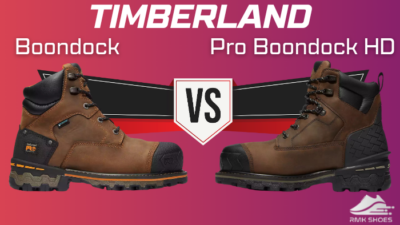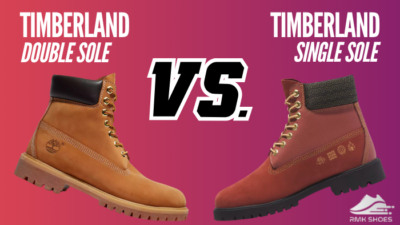When it comes to buying a new pair of daily trainers, the options are endless. With so many brands, models, and features, choosing the right pair can be overwhelming.
Two popular contenders in the neutral training are the ASICS Novablast and Nike Pegasus. Both series excel in their own regard and claim to deliver top-notch running experience.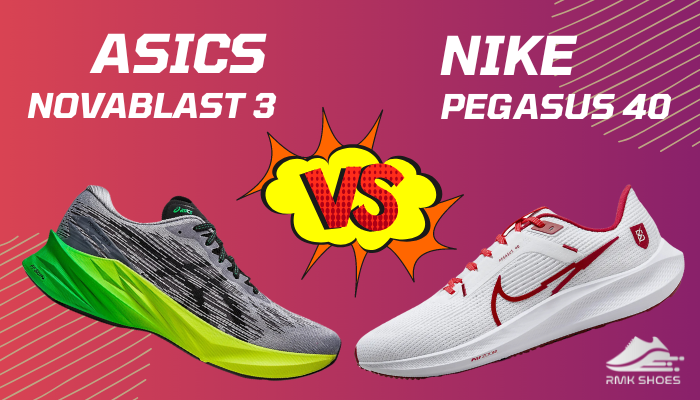
But which one is the right choice for you?
Let’s lace up both pairs and find out.
A Quick Overview of the Nike Pegasus and Asics Novablast
The Pegasus lineup has always been Nike’s legacy for daily training shoes. For ASICS, the Novablast series has been carrying that responsibility for a while now.
Additionally, Nike has quite a lot of time and experience in this category compared to ASICS, as they have been making Pegasus shoes since 1983.
For over three decades, Pegasus shoes have gradually captivated runners with their constant evolution. Nike is committed to delivering a comfortable and reliable ride with each yearly update in the Pegasus lineup.
Some of the notable models in this series are Pegasus 38, 39, and 40.
Meanwhile, after launching in 2020, the ASICS Novablast series became a fan favorite for its joyful and effortless running experience. It quickly gained popularity for its performance-driven innovation, offering energetic bounce and plush comfort.
Similar to Pegasus, the Novablast has also seen a few yearly updates, with the Novablast 2 and 3 being the most notable ones.
Feature Comparison Between Nike Pegasus 40 and ASICS Novablast 3
As these neutral runners are from two different brands, they incorporate different in-house materials and technologies that offer noticeably different user experiences.
Take a look at this side-by-side technical comparison between the Pegasus 40 and Novablast 3 to get a better understanding in this regard.
| Technical Aspects | Nike Pegasus 40 | ASICS Novablast 3 |
|---|---|---|
| Weight | 9.4oz(for US men’s size 9) | 8.9oz(for US men’s size 9) |
| Sizing | True-to-size | True-to-size |
| Upper material | Engineered mesh | Jacquard mesh made with recycled material |
| Breathability | Good | Excellent |
| Midsole | React foam with Zoom Air units | FyteFoam Blast Plus |
| Cushioning | Moderate, responsive | High, soft |
| Stack height | 18-28mm | 23-31mm |
| Heel-to-toe drop | 10mm | 8mm |
| Stability | Excellent with support for overpronators | Good |
| Outsole | Durable rubber with flex grooves | AHAR(Asics High Abrasion Rubber) |
| Break-in period | 1 or 2 short runs | Out of the box |
| Best for | Daily training, tempo runs, shorter distances | Easy runs, long distances, recovery runs |
| Pricing | $130 | $140 |
On a side note, check out the difference between the Novablast 3 and Nimbus 25.
Key Differences Between ASICS Novablast 3 and Nike Pegasus 40
For the past couple of months, I have been using both Novablast 3 and Pegasus 40 as my daily runners.
The previously mentioned technical aspects might not convey much, but there are a few notable differences between these shoes in real-world performance, which I have shortlisted in the following discussion.
1. Upper Construction
From the overall design language to different upper materials, the Novablast 3 from Asics differs quite a lot from the Pegasus 40 from Nike.
Let me explain!
Design and Aesthetics
The Asics Novablast 3 doesn’t shy away from making a bold and playful statement with its chunky silhouette. This pair embraces vibrant and eye-catching geometric patterns.
It also has reflective details and a contrasting logo.
The exaggerated midsole and rockered geometry give the Novablast a distinctly performance-driven look.
The Nike Pegasus 40, on the other hand, maintains a streamlined silhouette and subtle curves to convey a more modern vibe. This model has managed to strike a balance between timeless elegance and contemporary look.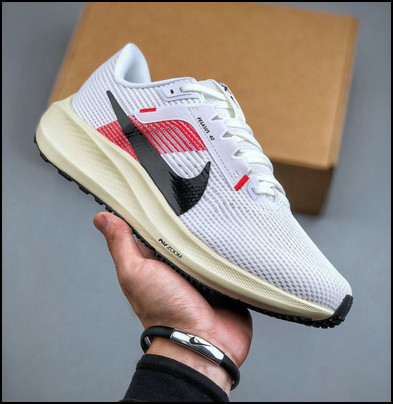
These shoes also offer bolder colorways for those who want to stand out.
Not to mention, you can customize the Pegasus 40 to your heart’s content from the “Design Your Own” section if you’re buying it from Nike’s website.
Upper Material
The Novablast 3 utilizes a jacquard mesh upper(open-weave material) that provides excellent breathability and a comfortable feel.
It’s also flexible enough to mold around your feet to give a snug yet non-restrictive feel.
However, I have already noticed some early signs of wear and tear in its upper construction.
Meanwhile, the engineered mesh upper of the Pegasus 40 incorporates strategic overlays to improve support, especially around the heel and midfoot.
Although it’s not as breathable as the Novablast 3, Nike has delivered good breathability and adequate airflow to keep your feet dry, even in dry weather.
It’s also noticeably more durable than the Novablast’s upper.
Tongue
The Novablast 3 has a gusseted tongue with a slightly longer profile. Its tongue wing design helps improve midfoot fit while reducing tongue movement during high-performance activities.
However, it lacks the plush padding that is present in Nike’s offering.
Furthermore, unlike the Novablast 3, the Pegasus 40’s tongue is not connected to the upper and provides more freedom of movement.
2. Midsole and Comfort
ASICS has implemented FlyteFoam Blast Plus Eco technology in Novablast’s midsole. It’s a full-length single-density foam known for its exceptional bounce and soft, pillowy feel.
Imagine running on marshmallows!
That’s how soft it feels during daily jogs or long-distance running.
This midsole also contributes a lot to the lightweight feel of this shoe, which is excellent for those who prefer a lighter running shoe.
But this plushy cushioning comes at the cost of slightly reduced stability.
Thankfully, the Pegasus 40’s React foam midsole excels in this regard, thanks to being a bit firmer and more responsive than Novablast.
Its moderate cushioning offers adequate comfort for most high-intensity workouts or fast-paced running while providing a good energy return.
Not to mention, it has Air Zoom units in the forefeet and heel-to-suit for both forefoot strike or heel strike running styles. It also gives a smoother toe-off during transitions and supports more technical strides.
The only downside that I found was the less bouncy feel of these shoes.
3. Outsole and Durability
To ensure maximum performance, ASICS has utilized their in-house AHAR rubber outsole in Novablast 3 with ASICS Lite technology. It’s a segmented rubber compound that prioritizes flexibility and ground feel.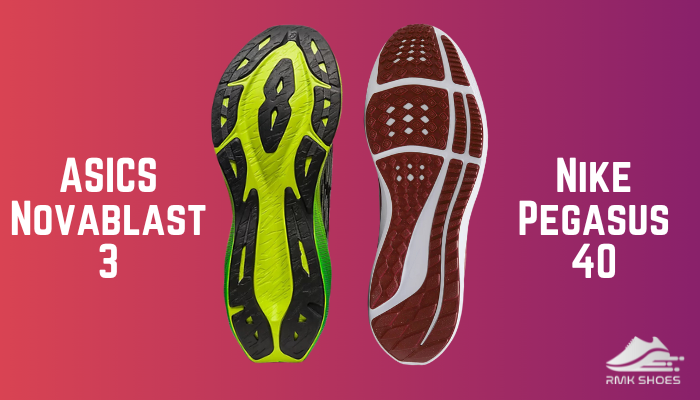
However, such segmented implementation reduces overall durability.
I have also noticed some wear in its outsole after a few high-mileage runs, particularly on the forefoot.
The sturdy rubber build throughout the Pegasus 40 has much better durability than the Novablast 3.
Overall, both shoes offer similar traction on various surfaces as both have tread patterns with flex grooves in their outsole unit.
| Feature | Asics Novablast 3 | Nike Pegasus 40 |
|---|---|---|
| Outsole Material | AHAR rubber with ASICS Lite | Durable rubber |
| Focus | Flexibility & Ground Feel | Traction & Durability |
| Wear & Tear | Potentially quicker wear, especially in the forefoot area | Excellent durability, Lasts hundreds of miles |
| Suitable Terrain | Smoother roads | Various surfaces, including rougher terrain |
4. Fit and Sizing
Both Asics Novablast 3 and Nike Pegasus 40 are generally considered true to size, but there are some nuances that you need to consider for an optimal fit.
For example, Novablast 3 has a slightly narrower profile compared to the Pegasus, especially in the midfoot and heel area. If you have a wider foot shape or prefer a roomier feel, I’d suggest going for half a size up.
The Pegasus 40 offers Extra-Wide versions to accommodate such an issue.
However, ASICS has been consistent with its sizing across different models. So, if you have previously owned a Novablast shoe, your usual size should also be good for Novablast 3.
And that’s not all!
Toe Box
Novablast 3 has a wider, higher toe cap to provide vertical clearance/toe-wiggling room. It is also very soft and flexible.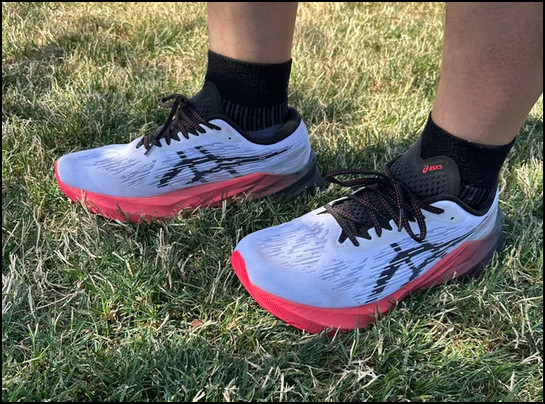
Some people may not like this feel as a training shoe needs to have a secure fit.
The toe box of the Pegasus shoes provides just that.
The slightly snugger fit of its toe cap and the engineered mesh upper enhance overall structure and support. It provides a foot lockdown feel during high-movement activities and prevents any foot slippage.
| Trait | Asics Novablast 3 | Nike Pegasus 40 |
|---|---|---|
| Toe box width | Wide | Standard |
| Toe box height | High | Medium |
| Upper feel | Soft and flexible | Structured and supportive |
Lacing
Both the Asics Novablast 3 and Nike Pegasus 40 utilize standard lacing systems.
But for a better fit, you should try different lacing styles to suit your running/workout styles.
For example, Novablast provides an optimal fit during fast-paced running if you go for heel lock lacing (securing the heel with additional loops around the ankle bones).
On the other hand, tightening the midfoot or going for a traditional lacing should be enough for the Pegasus shoes.
Collar and Heel Counter
The ASICS Novablast 3 has a low-cut, plush collar with decent padding to provide a comfortable and secure fit around the ankle.
Meanwhile, the Pegasus 40 from Nike opted for a mid-cut collar with padding similar to the Novablast 3.
Both shoes offered great comfort and ankle support during my long-running sessions.
Additionally, the Novablast 3 has an external heel counter, while the Pegasus 40 has an internal heel counter to further enhance the ankle support.
5. Weight Distribution and Stability
The Novablast 3 is around 5 ounces lighter than the Pegasus 40. That may not sound like much, but for daily wear, every ounce matters.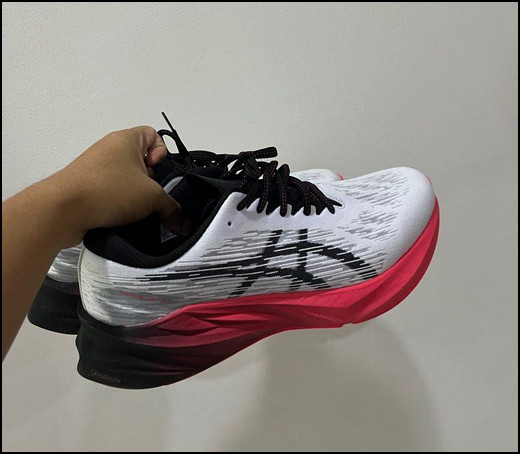
If you want to avoid foot fatigue after a long run or a suitable recovery runner, the lightweight feel of the Novablast 3 will serve you well.
Furthermore, the Novablast 3 has a more evenly distributed weight throughout its build, with a slightly heavier forefoot.
As a result, it provides a smoother transition through every gait cycle.
The Nike Pegasus 40 has a slightly heavier heel than the forefoot, which is more suitable for the heel-strike running styles. The React foam is also concentrated in the heel area to provide targeted responsiveness.
Not to mention, the slightly heavier heel, wider platform, and Zoom Air units increase the overall stability during any technical workouts or tempo running.
6. Running and Daily Training Performance
Since the Novablast 3 from ASICS has an incredibly soft and bouncy FlyteFoam Blast midsole, it will make your long runs feel effortless.
It’s an easy pick for recovery runs or long distances due to its plush comfort and smooth transitions.
However, it felt a little sluggish due to the softer midsole than the Pegasus 40, making it less ideal for fast-paced running or interval training.
Speaking of Pegasus 40, it’s adequate cushioning and responsive midsole offer a more balanced feel that’s more versatile for any kind of indoor or outdoor training.
It also has a wider base and firmer foam with a medial post, providing better stability and support for neutral and mild overpronators.
7. Price and Value Proposition
The MSRP of the Novablast 3 is around $10 higher than the Nike Pegasus 40.
However, since the Novablast 3 is a year older shoe than the Pegasus, you can easily find it at a discounted price.
If we compare these shoes at their MSRP, the Pegasus 40 offers a better overall experience than the Novablast unless plush and comfort are your main priority.
Strengths and Weaknesses of the Asics Novablast 3 and Nike Pegasus 40
Despite being neutral daily runners, each shoe has its own advantages and disadvantages, which can either make or break the ideal for any potential buyer.
Going through their fundamental differences might not highlight the benefits or drawbacks of individual runners. To know more about it, let’s look at the pros and cons of the ASICS Novablast 3 and Nike Pegasus 40 to determine the most suitable one for you.
ASICS Novablast 3
- »Extraordinarily soft and well-cushioned for maximum comfort.
- »Lightweight and bouncy.
- »Suitable for energetic rides, even for longer runs.
- »More breathable upper.
- »Less stable.
- »Durability concerns for high mileage.
- »Less responsive cushioning.
Nike Pegasus 40
- »Better stability.
- »Versatile and well-rounded for various activities.
- »More durable outsole.
- »Good balance of cushioning and adequate responsiveness.
- »Zoom Air units in the rearfoot and heel add a springy feel during transitions.
- »Less soft cushioning.
- »Slightly heavier.
- »Less breathable upper.
Verdict: Asics Novablast 3 vs Nike Pegasus 40
If you want a versatile fit that provides an excellent running and daily training experience, the Nike Pegasus 40 would be a better choice than the ASICS Novablast 3. It also has a more premium feel and streamlined design that can be worn up or down with any outfit.
That being said, the Novablast 3 would become a better fit for you if you prefer comfort and a lightweight feel from your daily trainer.
But, if you can’t find it for a cheaper price tag than the competitor, I’d suggest going for the Nike Pegasus, as it also offers enough comfort without sacrificing stability.
No matter which one you go for, you should always try these shoes on to pick the shoe that fits your foot physique and walking style.
Frequently Asked Questions
What are Asics Novablast shoes used for?
ASICS Novablash shoes are used for their high cushioning and shock-absorbing traits. These lightweight shoes reduce the impact force while walking, allowing an easy recovery run.
What is Nike Pegasus best for?
Nike Pegasus kicks are best for daily training and high-mileage runs. These shoes have excellent stack height and offset, allowing a natural and stable stride for any running style.
Which Novablast is best?
The latest and greatest Novablast 4 is currently the best one that ASICS has to offer. Despite being an iterative update in the Novablast lineup, the 4th version incorporates the much-needed stability and flexibility for daily training sessions.
What’s the difference between the Nike Pegasus 40 and 39?
The Pegasus 40 from Nike is a bit more stable and less springy than the Pegasus 39. Also, the newer model is slightly heavier than the older one.

